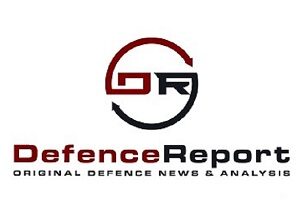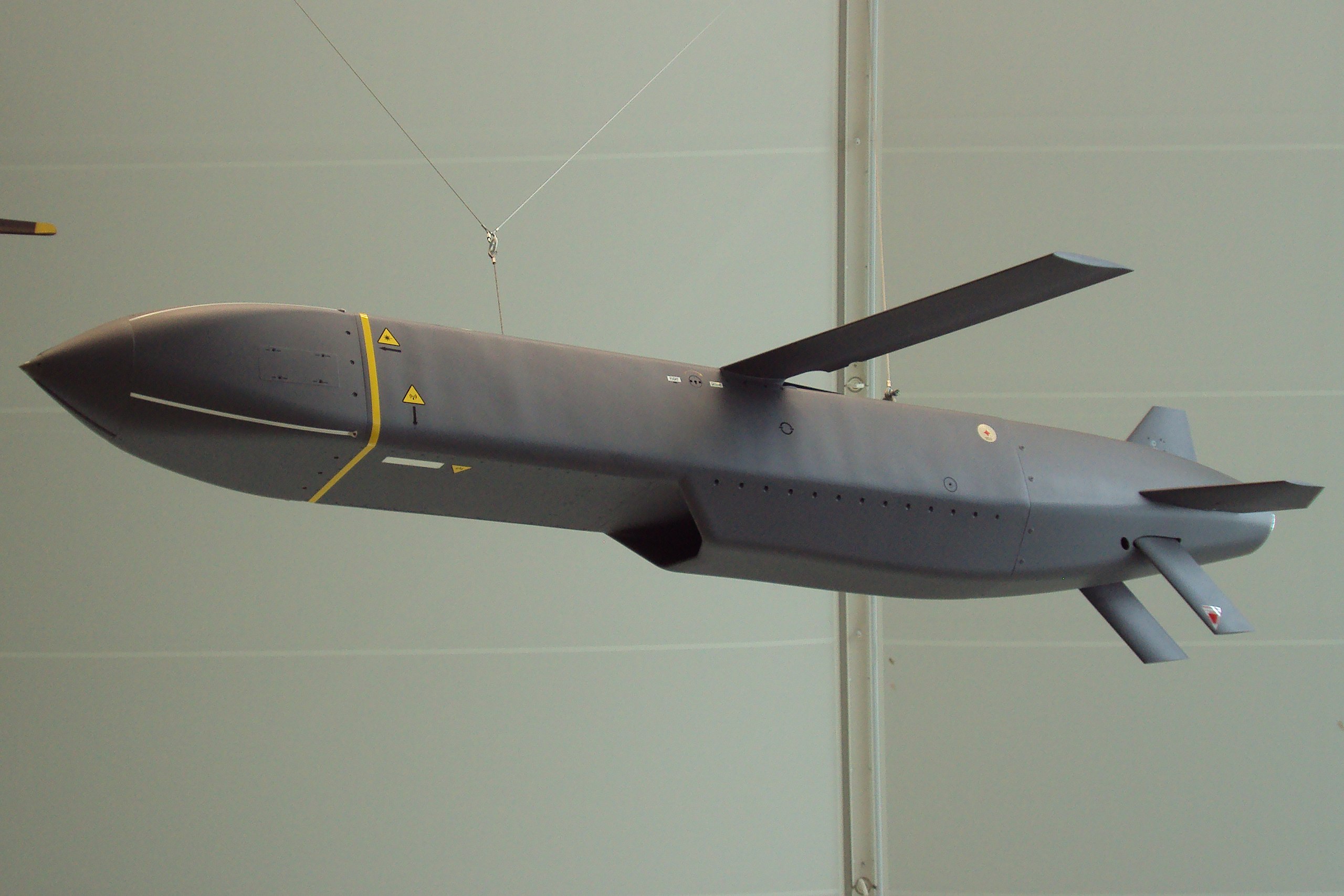12 May 2023
The UK delivered an unspecified number of long-range Storm Shadow cruise missiles to Ukraine. It is developed by MBDA which was created in 2001 after a merger of British, French, and Italian missile companies.
Storm Shadow is the longest-ranged munition that has been provided to Ukrainian forces. The HIMARS that has been vaunted by the media is limited in range. Although the truth of the matter is that the system is not limited, but the missiles that the United States has been providing. Those missiles are limited to 90 kilometers (50 miles). There are HIMARS missiles that are capable of close to 300km. The recent Discord leaks show that the UK and Ukraine have been developing workarounds as Russia has been jamming the GPS guidance of the HIMARS rockets.
Storm Shadow
The Storm Shadow, unlike the HIMARS, is launched by air. It is believed that the Ukrainian SU-24 (NATO designation Fencer) fleet will be able to take up the task. Of course, there had to be a workaround when it came to launching the sophisticated Western munition from Soviet-era supersonic tactical bomber. The missile has stealth capabilities and has GSP Map of the Earth Guidance capability, which means that it can be more accurate.
The missile provided is the export version, so the range is limited to 250 km (155 miles). The non-export version has a range almost double it. The 250 km range is of no issue for Ukraine as most Russian positions in sovereign Ukraine are within it — meaning that a Ukrainian SU-24 could fire from behind the front lines and hit a target well within Russian-held territory.
The UK did come to an agreement with the Ukrainians that the missiles would not be used against targets within Russia. Many Western countries have been concerned about Ukraine targeting Belgorod. Belgorod is on the border with Ukraine and has a Russian military base and nuclear weapons. However, Ukraine does have the capability of hitting Belgorod with the weapon systems it had before the introduction of the Storm Shadow.
Denied US Requests
Ukrainian officials have been asking for the US ATACSM. It is another land-based missile with a range of 300 km (185 miles). The US has denied this and also supplied HIMARS-capable missiles with limited range in order to de-escalate the situation. There have been some attacks within Russia that have been questionable and many speculate that Ukraine is responsible, however, there has never been any official statement affirming this. There are concerns for some European countries, such as Germany and France, that escalating the war with Russia would heighten the risk of an all-out NATO war with Russia. So the response has been piecemeal and really on the Ukrainians to:
- Prove that the limited training that they receive equates to territorial gains;
- That they can continue to effectively field a piecemeal army based on European hand-me-downs;
- Demonstrate to the West that an increase in capabilities means an increase in success.
There have been many thresholds — from anti-armor MANPADS such as the Javelin, to artillery systems and recently main battle tanks. Modern fighter jets are not a Rubicon that has been crossed yet. However, the Ukrainian request for F-16s should be taken seriously. It is estimated that Ukrainian pilots would need a significant amount of training on those aircraft, and they would not be able to deploy until well into 2024. This being said, there was a US evaluation on Ukrainian pilots in March, where Ukrainian pilots were taught more about combat techniques and an overall evaluation on how long it would take to train on American systems. Estimates still place an F-16 deployment, if training started immediately, would be in 2024.
The Ukrainians have not only been asking for longer-range HIMARS missiles but also ones that have a cluster munition payload. The typical HIMARS missile warheads (M30A1) that have been delivered carry a very significant amount of tungsten ball bearings which can tear through personnel, regular trucks, and some light armour. This is why they have been so effective. The issue for the Ukrainians is that they stated they also want the original cluster munition warheads, which were only replaced in 2017. These warheads contained 600 smaller bombs that would disperse over a wider area. However, many of them would not initially detonate and then would become a problem for those inhabiting the area for decades – wildlife and humans. This is why there is a convention against cluster munitions. There are a number that have not signed the Convention including the United States, Russia, and Ukraine.
But why would Ukraine want cluster bomb HIMARS munitions? Cluster munitions pose a serious risk to Ukrainians in the future. Imagine the frontline where the Russians have dung in trenches and fortifications, if a cluster munition were deployed there would be an initial spattering of explosions. However, the unexploded ordinance would slowly take effect on Russian positions and Russian morale. Small bombs going off and maiming Russian troops over time might even make that area almost inoperable when it comes to maneuvering. This, of course, would be a tactical benefit for Ukraine. The issue would be when it comes to taking that ground from the Russians as it is an unsafe territory and then for future Ukrainians in the future. For the United States to transfer such munitions would not be against their position with the convention, but a definite slap in the face diplomatically for those who did.
How Will the Storm Shadow Be Used
President Zelenskky told the BBC that Ukraine needs more time for the counter-offensive to properly begin. Russia has been fortifying its positions with trenches, mines, dragon’s teeth for months. The introduction of older Soviet tanks such as the T-55 could be used as stationary frontline support guns. They are older models, but if they are dug in with the turrets just above the ground they can be effective. As a rule, defensive positions always have the kill: death ratio in gain.
Storm Shadow can be a more equalizing weapon. There have been issues with HIMARS’ targeting as Russia is deploying jamming countermeasures. However, those countermeasures are deployed within the HIMARS range. Now, Russia will have to deploy the same amount of jamming assets through the entire operational theatre and also take into account that Storm Shadow operates differently than HIMARS.
Strom Shadow can hit Russian targets pretty much within Russia’s operational space. This means that ammo and fuel depots, vehicle maintenance, and rallying points can be hit. And the Russian military’s everlasting Achille’s Heel – Command and Control assets. Russia’s military leadership is still very top-down in its command structure. Orders are made; carry them out. While in Western militaries there is a lot more flexibility within the command structure. Yes, there is a goal, but lower-level officers have flexibility as to how that goal is achieved.
Not only that but due to the complexity and evolution of technology, the command and control structure has changed. During the First Gulf War, it was Command, Communication, Control, and Intelligence (C3I). Now it is C6ISR – Command, Control, Communication, Computers, Combat Systems, Cyber, Intelligence, Surveillance, and Reconnaissance. Because it has become more complex, it also has become more vulnerable, especially for the Russians.
There is a new term has arisen from the Ukraine war – the Transparent Battlefield. The availability of high-resolution satellite photography, such as GoogleEarth and other paid services, has been coupled with a virtual army of Open-Source Intelligence (OSINT) enthusiasts, who scour through the imagery and social media posts and then report on what is happening. This has led to an insurmountable amount of actionable intelligence. There also has been developments in signals intelligence, where troop clusters can be seen by the concentration of mobile phone and other device users and their data use. The use of drones on the frontlines means that there is actionable surveillance and reconnaissance to utilize.
The Storm Shadow will be utilized with the Transparent Battlefield in mind. C6ISR and supply depots, that were well beyond the reach of the HIMARS, will be targeted. The introduction of Storm Shadow means that the vast majority of Russian targets are available, and Ukraine has the Herculean task of prioritizing them now. Those decisions will be made with the aim to cut the proverbial head of the snake.
The other thing about the Ukrainian counteroffensive is that it will not be a momentous blitzkrieg event. It will be based on a bunch of smaller operations across the front. Not only to test where the Russian defenses are the strongest but also to poke and prod and work themselves up to a breakaway moment. The only question now is…how many Storm Watchers will be provided by the West? And will this spark more longer-ranged missiles to be donated as the UK pledge for the Challenger 2 did?
Feature Photo: RAF Museum Colindale: Storm Shadow, c. 2010, Wikimedia Commons, 2023


